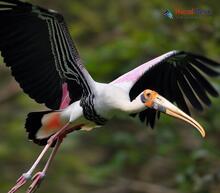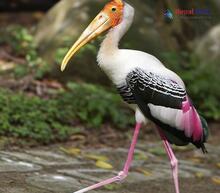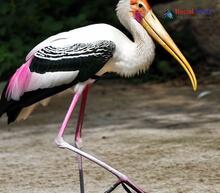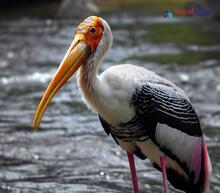The Mycteria genus, consisting of marvelous large wading birds called storks, has piqued the interest of bird lovers and scientists alike. In this article, we'll venture into the enchanting realm of these captivating storks, examining their evolutionary history, classification, physical features, habitats, different species found within the genus, and their unique presence in the biodiverse nation of Nepal.
Evolution and Taxonomy
Mycteria storks boast a rich evolutionary heritage that spans millions of years. Fossil records imply they first emerged during the early Miocene epoch. As time passed, these ancient birds evolved to suit varying environments and formed distinct traits that equipped them for life in their particular habitats.
The classification of the Mycteria genus is as follows:
Kingdom: Animalia
Phylum: Chordata
Class: Aves
Order: Ciconiiformes
Family: Ciconiidae
Genus: Mycteria
There are four known living species within the genus - Wood Stork (Mycteria americana), Yellow-billed Stork (Mycteria ibis), Painted Stork (Mycteria leucocephala), and Milky Stork (Mycteria cinerea).
Physical Features Unveiled
Mycteria storks possess distinctive characteristics that set them apart from other birds within the Ciconiidae family. They commonly display white or pale-gray plumage complemented by black-tipped wings. Long legs enable them to wade in shallow waters while their unique downward-curved hooked beak allows them to efficiently catch fish - their main dietary staple. Adult Mycteria storks typically stand 90-115 cm tall with a wingspan ranging from 150-200 cm.
Exploring Ecology
The Mycteria genus can be found living primarily in wetland habitats such as marshes, swamps, and riverbanks across Asia, Africa, and America. They are skillful fish hunters, often employing a special method in which they submerge their open beak underwater and quickly snap it shut upon sensing prey. In addition to fish, they occasionally eat crustaceans, amphibians, and small mammals. When it comes to nesting, they are known to establish large colonies in tall trees near bodies of water, with both parents playing an active role in nesting responsibilities.
The Storks of Nepal
With over 850 recorded bird species inhabiting its lands, Nepal is a hub of avian diversity. The colorful Painted Stork (Mycteria leucocephala), adorned with pink-tinged wings, can be found in the Terai lowlands region of Nepal, primarily around Chitwan National Park and Koshi Tappu Wildlife Reserve. Conserving essential wetland habitats is crucial for protecting the Mycteria storks that reside within Nepal's borders.
In summary, the Mycteria genus offers an enthralling glimpse into the world of storks that inhabit our planet. By learning about their evolution, taxonomy, physical traits, and ecological habits, we gain a deeper appreciation for these awe-inspiring creatures. Furthermore, acknowledging their presence in Nepal illustrates the country's remarkable biodiversity and underscores the importance of dedicated conservation initiatives to ensure these exquisite birds continue to flourish for years to come.




